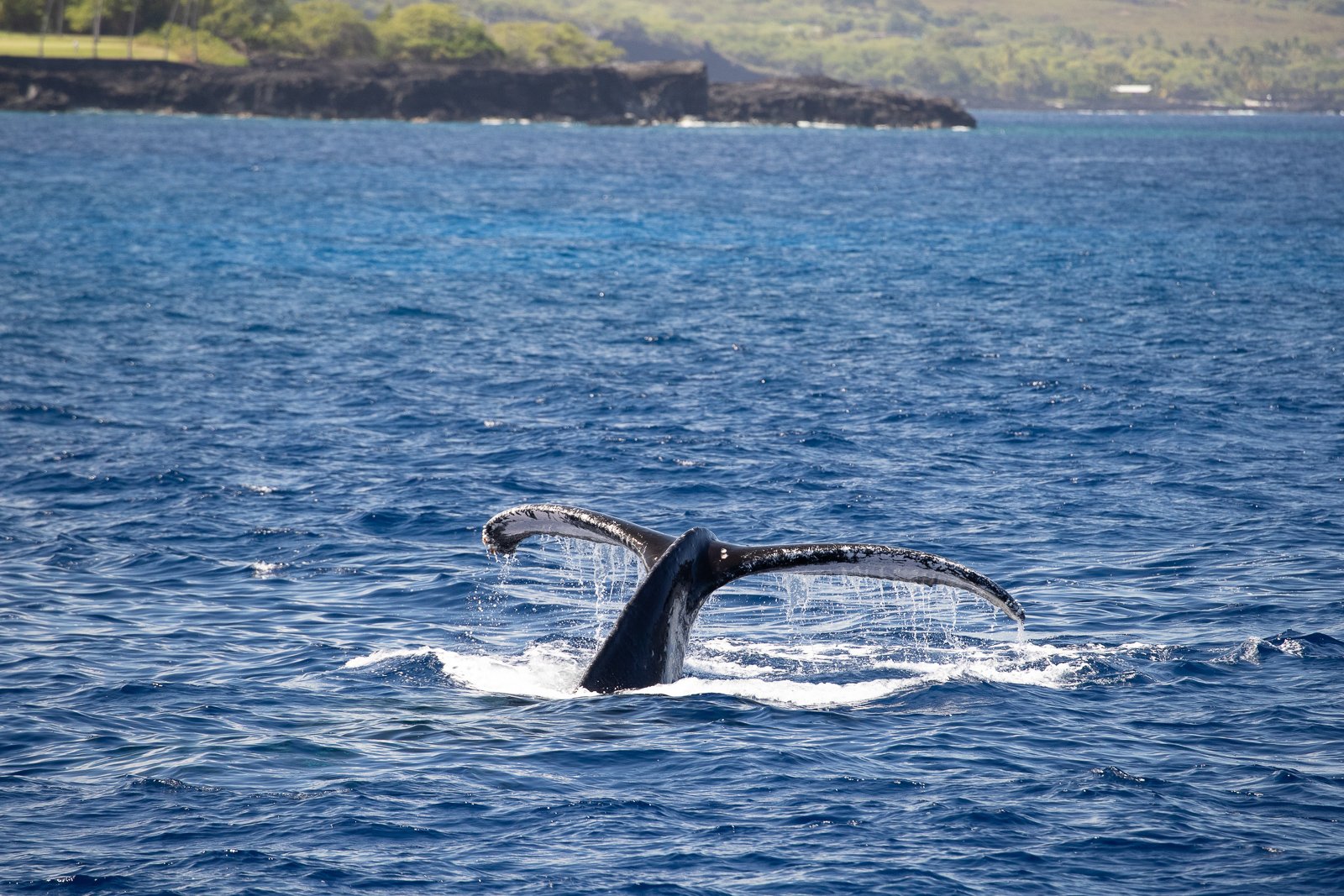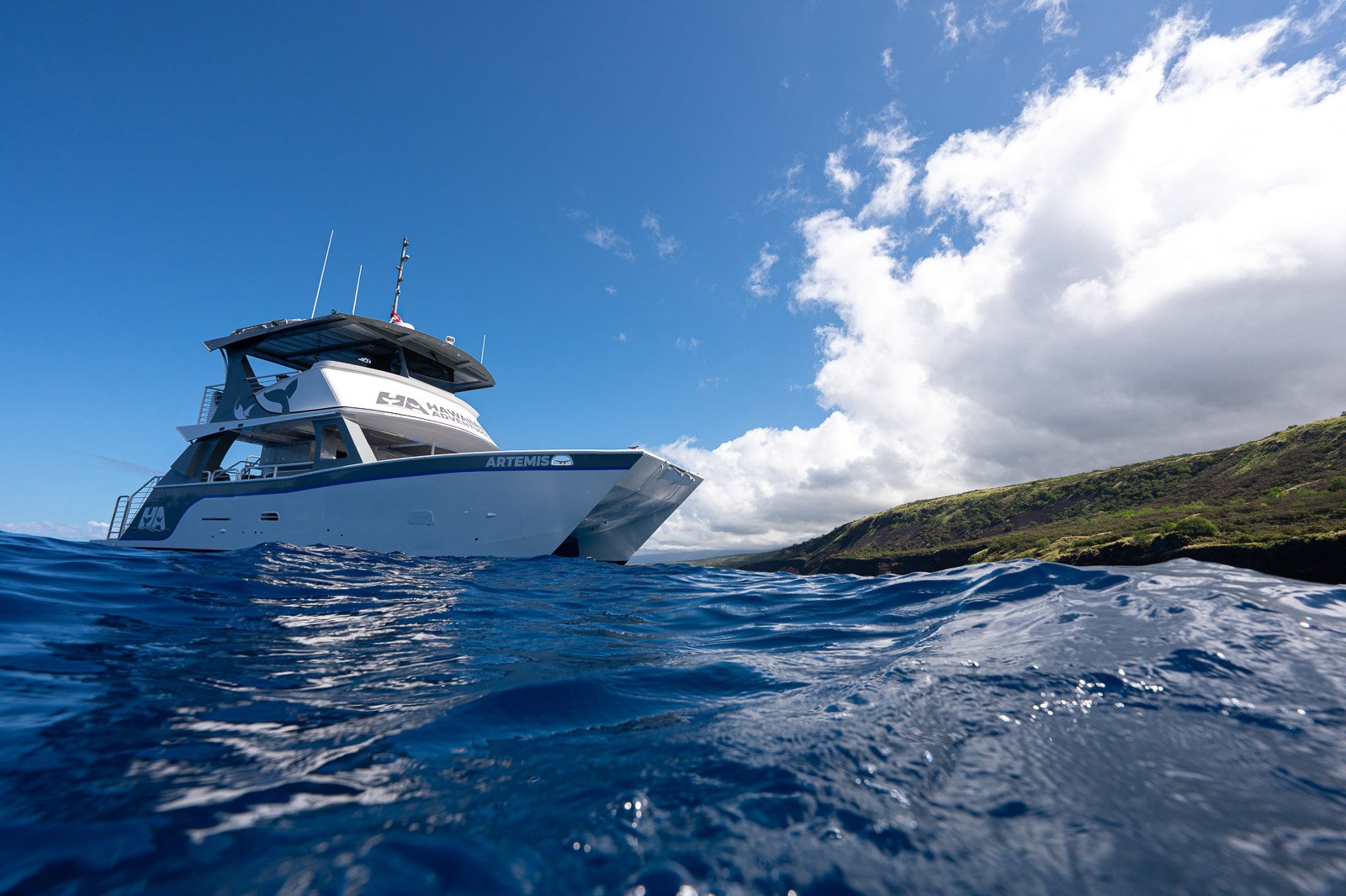
Humpback Whales
Humpback whales are found in every ocean and have become one of the most beloved and recognized whales in the world. Their curiosity and charisma make them a favorite among whale watchers. Humpbacks are perhaps the most acrobatic of the baleen whales, aided by their long pectoral flippers and powerful tails. Lucky passengers may see humpbacks slapping their fins on the surface, lobbing their tails out of the water, and even full-body breaching. Despite being incredibly large, humpbacks feed on some of the smallest organisms. In lieu of teeth, humpbacks have plates of baleen allowing them to filter out their tiny prey. Male humpbacks are known for creating complex “songs'', underwater vocalizations that can be repeated dozens of times throughout the day, last 10-20 minutes, and be heard by other whales many miles away. Many of these songs occur in the breeding grounds of the Hawaiian Islands.
Whale Stats
Hawaiian Name: Kohola
Scientific Name: Megaptera novaeangliae
Length: 40-50 ft
Weight: 50,00-80,000 lbs
Diet: krill, small fish
Lifespan: up to 80 years
Season: December-March
Humpback Whale Identification
Humpback whales are primarily identified by the distinctive patterns on the undersides of their tales. Every humpback fluke has identifying features such as coloration, patterns, marking, and shapes that are unique to the individual. Through photo identification, naturalists are able to identify a whale by comparing their personal photo to a scientific database of whale ID photos.
HappyWhale
Happywhale is the most comprehensive digital database for humpback identification in the world. Happy whale encourages citizen scientists to identify marine mammals by submitting photos to their digital database! Utilizing AI facial recognition technology, Happywhale analyzes your submitted humpback fluke photo and generates potential ID matches for that individual! This photo identification work has allowed us to better understand humpback whales movements, patterns, behaviors, and population status!
Humpback Migration
Every year, thousands of humpback whales make the migration journey from their feeding grounds to the breeding grounds of the Hawaiian Islands. This migration journey is estimated to take 6-8 weeks and average 6,000 miles. This lengthy migration ties them with gray whales for the longest average mammal migration on the planet. After spending the winter months breeding, giving birth, and nursing their calves, Humpback whales will journey again across the Pacific back to their summer feeding grounds.
The Hawaiian Islands Humpback Whale National Marine Sanctuary
National Marine Sanctuaries protect ocean and Great Lakes areas of national significance. The Hawaiian Islands Humpback Whale National Marine Sanctuary was created with the mission of protecting humpback whales and their habitat. Hawaii’s waters welcome over 20,000 humpbacks every winter who use the waters for breeding, calving, and nursing activity. The sanctuary itself encompasses over 1400 sq miles of water, and surrounds the Hawaiian Island chain of islands. The sanctuary is active in research and education, and is managed jointly by the National Oceanic Atmospheric Administration (NOAA) and the State of Hawaii Department of Land and Natural Resources.
More Whales, Dolphins, and Wildlife of the Kona Coast
The Kona coast boasts an incredibly diverse array of marine life. Venture with us out into the blue in search of graceful mantas, massive mola mola, schooling sharks, or one of more than a dozen species of toothed whales that traverse these island waters.
Kona Whale Watch Tours
Season: December - March
Duration: 2.5-3 Hours
Season: December - March
Duration: 2-2.5 Hours
Season: April - November
Duration: 3-4 Hours
Book Direct and Save
At Hawaiian Adventures Kona, we offer the best available rates to our guests who book direct. Take the hassle out of making reservations through third-party booking agents and you’ll receive the lowest discounted rate. You’ll also receive direct communication with our team of year-round, full-time crew with confirmation emails/text messages, tour reminder emails, and special promotions after your tour. Should your travel plans change, it’s much easier to modify a direct booking as opposed to a third-party booking. Book direct with Hawaiian Adventures Kona to get the best service and lowest prices!









